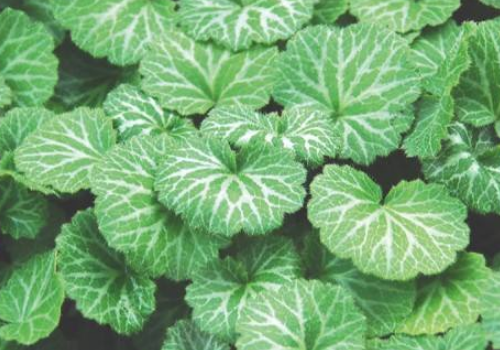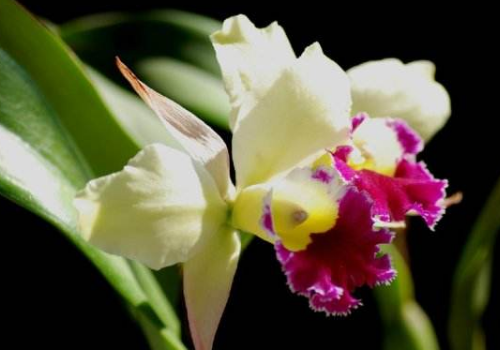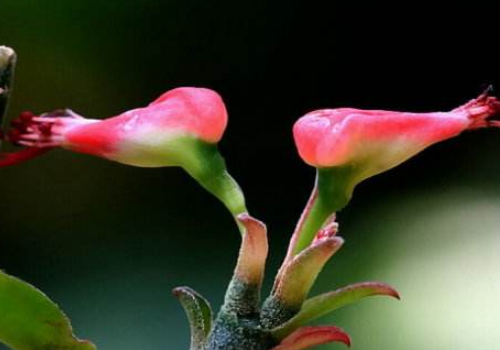What is the reason why Saxifraga has lost its leaves?
Next, let's go and see how to deal with the loss of Saxifraga leaves. What is the reason why Saxifraga loses its leaves? What to do:
What is the reason why Saxifraga has lost its leaves:
1. Frostbite
Saxifraga is slightly hardy and can survive safely at a temperature of about 5 ℃ in winter, but it is vulnerable to frostbite if the temperature is too low, such as in winter in the north. Frostbitten leaves, withered, easy to fall off, will fall off when touched.
2. Root rot
Saxifraga leaves fall, if you check the connection between the leaf and the stem, there is no sign of blackening, it is necessary to consider whether the root system is rotten.
Saxifraga is resistant to shade and dampness. if the temperature is too high and there is stagnant water in the basin soil, it will lead to root rot, weaken the ability of plants to absorb water and nutrients, and lead to leaf damage and wilting.

What if Saxifraga loses its leaves:
1. Temperature treatment
In the north, where the temperature is relatively low in winter, Saxifraga is not suitable for outdoor breeding. Flower friends with heating can move Saxifraga indoors to ensure that the temperature of day and night is in a warm state. If there is no heating, you can cover the Saxifraga flowerpot with an insulation bag for protection for a period of time.
Some Saxifraga variants even have higher requirements for winter temperature, the overwintering temperature should not be lower than 15 ℃. In this way, flower friends in the south should also take good heat preservation measures to prevent Saxifraga frostbite.
2. Root treatment.
Pull up the plant, check the roots, wash off the black rot of the sticky soil, and then remove the rotten part.
Put the plant in a ventilated and cool place to dry. After the incision is healed, you can apply carbendazim on the cut, and then maintain it in the basin. Don't water it in a hurry, or the roots won't slow down. Just keep the soil moist when you put it on.
Now you know how to deal with Saxifraga leaves.
How do Saxifraga lose its leaves? what is the reason for the loss of leaves?
Saxifraga is an evergreen flower with scaly leaves and red and pink flowers. It is a good potted flower. It is not only an ornamental plant, but also the whole grass can be used as medicine. What if Saxifraga leaves off?
What if Saxifraga loses its leaves:
Temperature treatment
In the north, where the temperature is relatively low in winter, Saxifraga is not suitable for outdoor breeding. Flower friends with heating can move Saxifraga indoors to ensure that the temperature of day and night is in a warm state. If there is no heating, you can cover the Saxifraga flowerpot with an insulation bag for protection for a period of time.
Some Saxifraga variants even have higher requirements for winter temperature, the overwintering temperature should not be lower than 15 ℃. In this way, flower friends in the south should also take good heat preservation measures to prevent Saxifraga frostbite.
Root treatment
Pull up the plant, check the roots, wash off the black rot of the sticky soil, and then remove the rotten part.
Put the plant in a ventilated and cool place to dry. After the incision is healed, you can apply carbendazim on the cut, and then maintain it in the basin. Don't water it in a hurry, or the roots won't slow down. Just keep the soil moist when you put it on.
When leaves fall in summer, you can properly shade, avoid direct light, and put it in a place with mild light for a period of time.
Analysis of the reasons for the loss of leaves in Saxifraga
Frostbite
Saxifraga is slightly hardy and can survive safely at a temperature of about 5 ℃ in winter, but it is vulnerable to frostbite if the temperature is too low, such as in winter in the north.
Frostbitten leaves, withered, easy to fall off, will fall off when touched.
Root rot
Saxifraga leaves fall, if you check the connection between the leaf and the stem, there is no sign of blackening, it is necessary to consider whether the root system is rotten.
Saxifraga is resistant to shade and dampness. if the temperature is too high and there is stagnant water in the basin soil, it will lead to root rot, weaken the ability of plants to absorb water and nutrients, and lead to leaf damage and wilting.
What if Saxifraga loses its leaves?
Analysis on the causes of the loss of leaves in Saxifraga
Frostbite
Saxifraga is slightly hardy and can survive safely at a temperature of about 5 ℃ in winter, but it is vulnerable to frostbite if the temperature is too low, such as in winter in the north.
Frostbitten leaves, withered, easy to fall off, will fall off when touched.
Root rot
Saxifraga leaves fall, if you check the connection between the leaf and the stem, there is no sign of blackening, it is necessary to consider whether the root system is rotten.
Saxifraga is resistant to shade and dampness. if the temperature is too high and there is stagnant water in the basin soil, it will lead to root rot, weaken the ability of plants to absorb water and nutrients, and lead to leaf damage and wilting.
What if Saxifraga loses its leaves?
Temperature treatment
In the north, where the temperature is relatively low in winter, Saxifraga is not suitable for outdoor breeding. Flower friends with heating can move Saxifraga indoors to ensure that the temperature of day and night is in a warm state. If there is no heating, you can cover the Saxifraga flowerpot with an insulation bag for protection for a period of time.
Some Saxifraga variants even have higher requirements for winter temperature, the overwintering temperature should not be lower than 15 ℃. In this way, flower friends in the south should also take good heat preservation measures to prevent Saxifraga frostbite.
Root treatment
Pull up the plant, check the roots, wash off the black rot of the sticky soil, and then remove the rotten part.
Put the plant in a ventilated and cool place to dry. After the incision is healed, you can apply carbendazim on the cut, and then maintain it in the basin. Don't water it in a hurry, or the roots won't slow down. Just keep the soil moist when you put it on.
When leaves fall in summer, you can properly shade, avoid direct light, and put it in a place with mild light for a period of time.
- Prev

What is the reason why the Cateran flower does not bloom when it blossoms?
Timely pruning is necessary if the Cateran flowers are to grow better. When does the Katran flower blossom? What is the reason for not blooming: when does the cartland flower bloom: Cartland usually blossoms in spring and autumn, blossoms once or twice a year, and the flowering period is usually 3 or 4 weeks.
- Next

Why cardinals don't blossom and how to grow them
Cardinals are so popular, how to raise them? Why don't cardinals blossom? How to raise: why cardinals don't blossom: temperature, native to the Central American West Indies. Sexual preference for warmth, suitable for living in sunny but not too strong and well-ventilated places. If the temperature is too high, the semi-overcast condition can also be adapted.
Related
- Fuxing push coffee new agricultural production and marketing class: lack of small-scale processing plants
- Jujube rice field leisure farm deep ploughing Yilan for five years to create a space for organic food and play
- Nongyu Farm-A trial of organic papaya for brave women with advanced technology
- Four points for attention in the prevention and control of diseases and insect pests of edible fungi
- How to add nutrient solution to Edible Fungi
- Is there any good way to control edible fungus mites?
- Open Inoculation Technology of Edible Fungi
- Is there any clever way to use fertilizer for edible fungus in winter?
- What agents are used to kill the pathogens of edible fungi in the mushroom shed?
- Rapid drying of Edible Fungi

